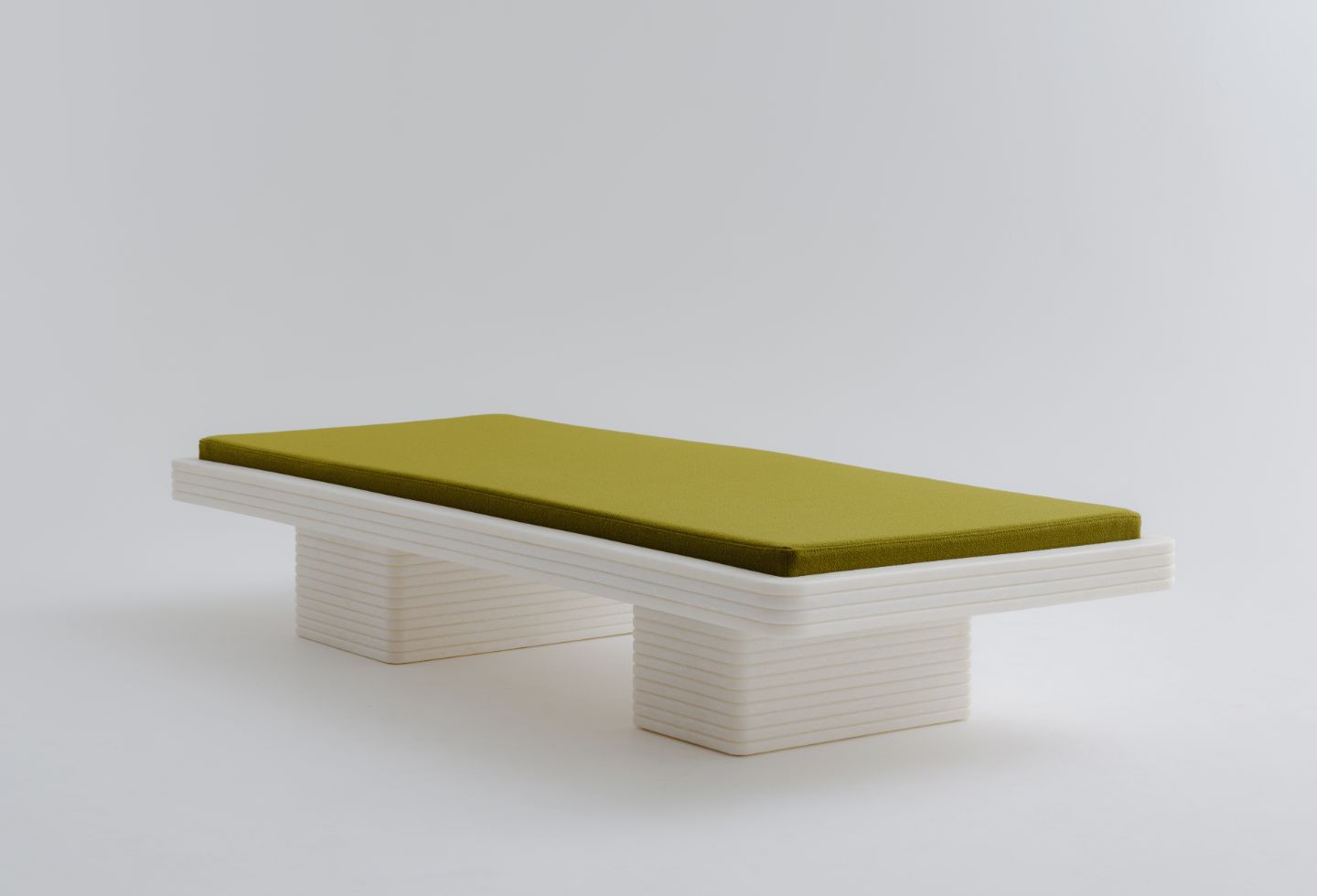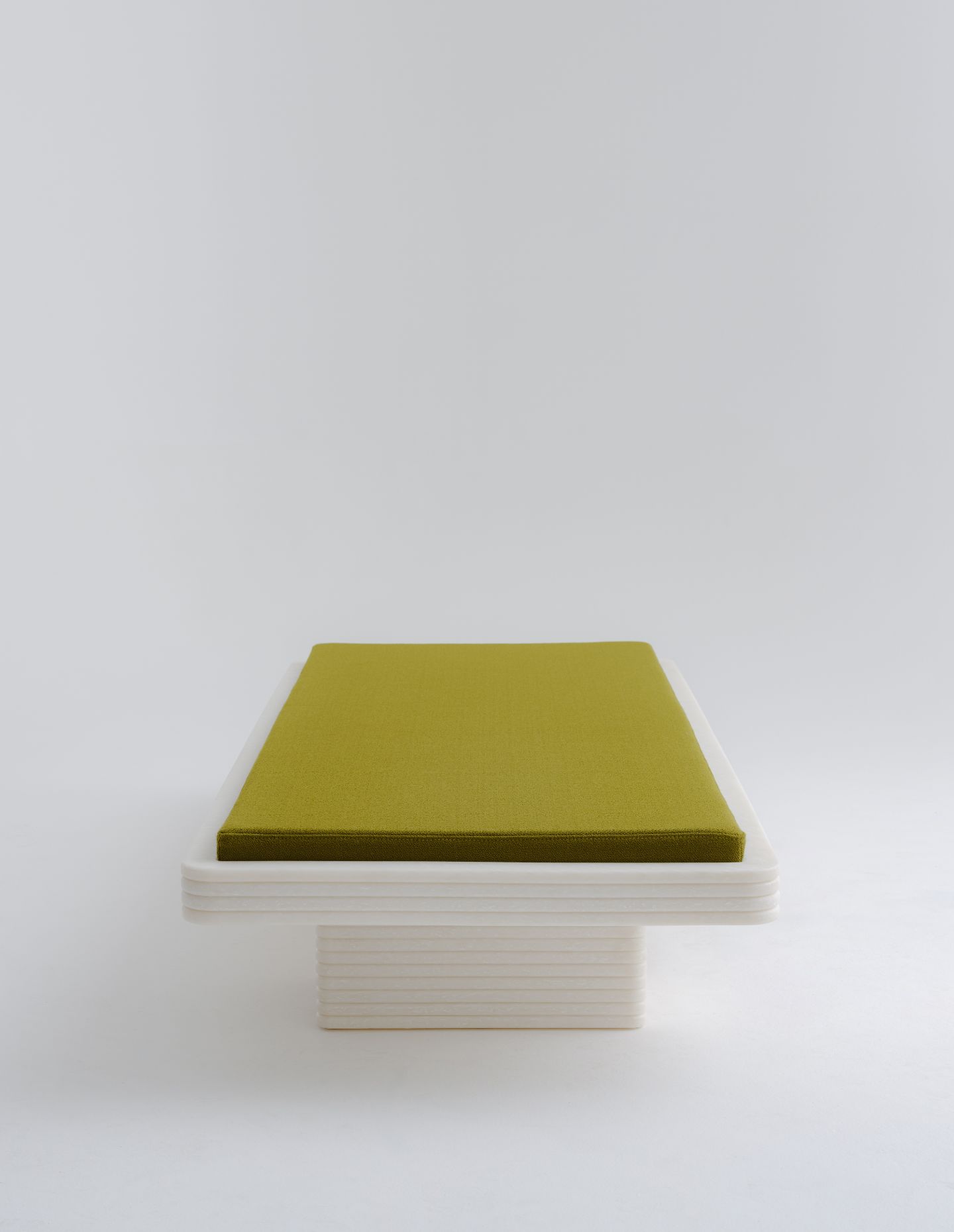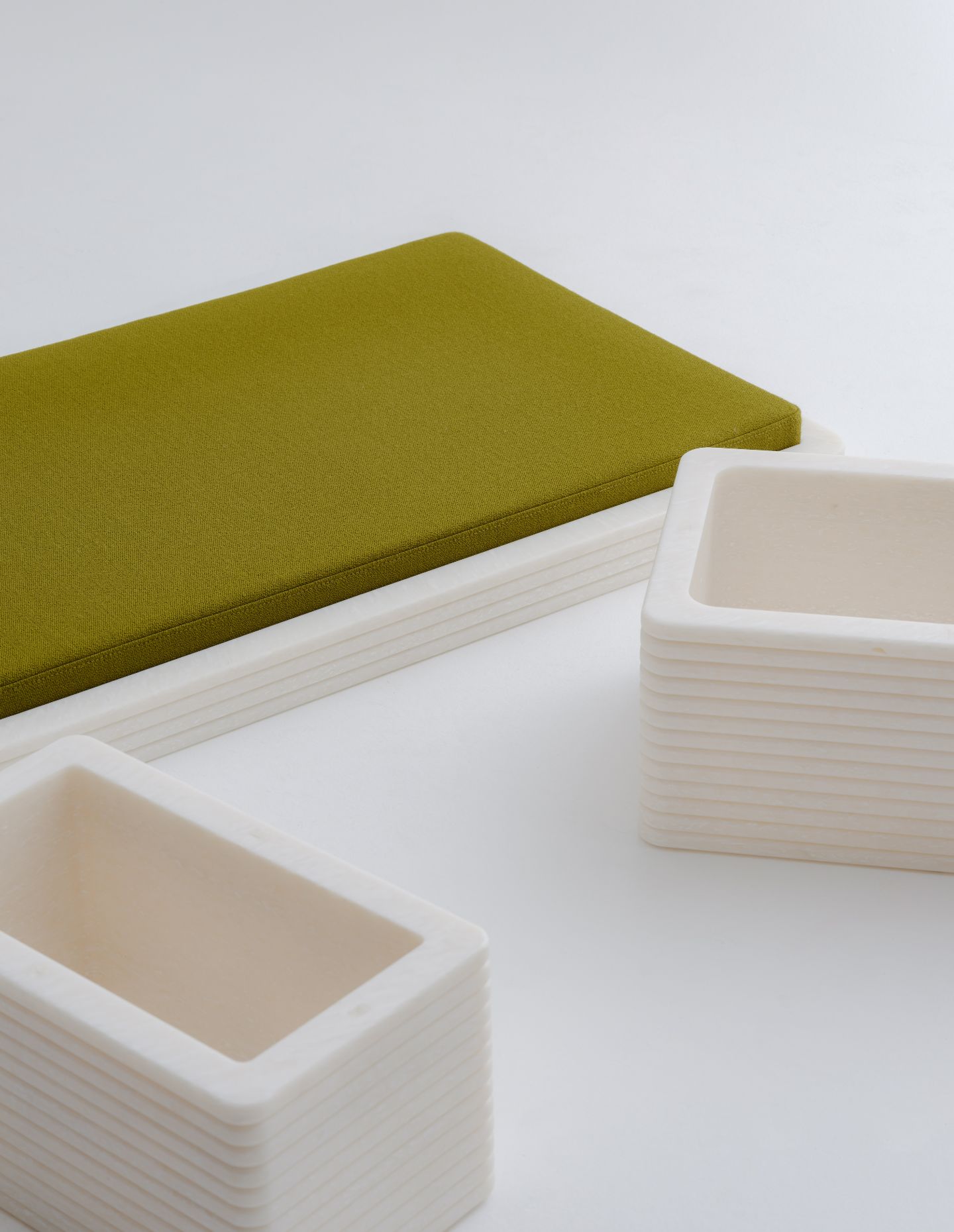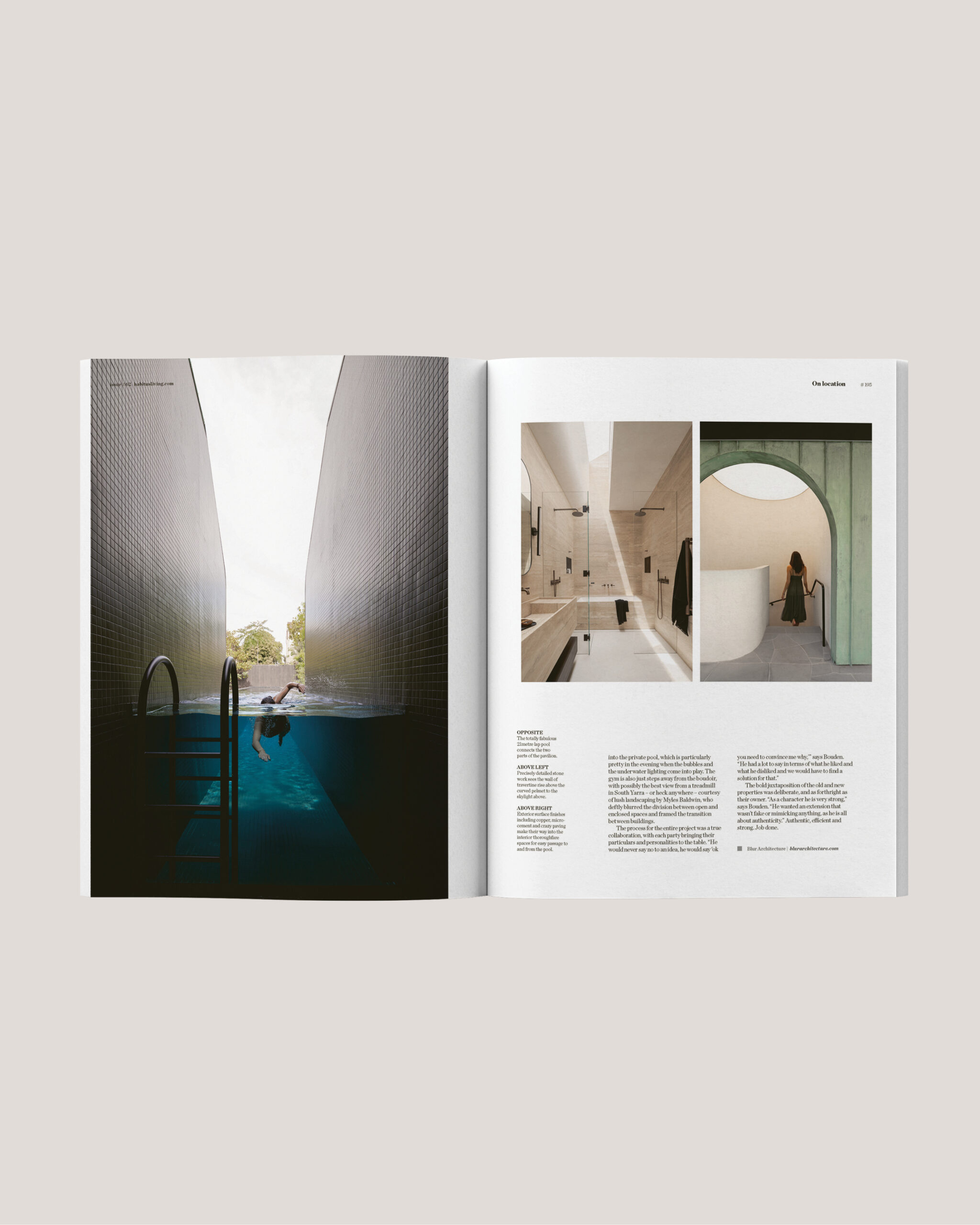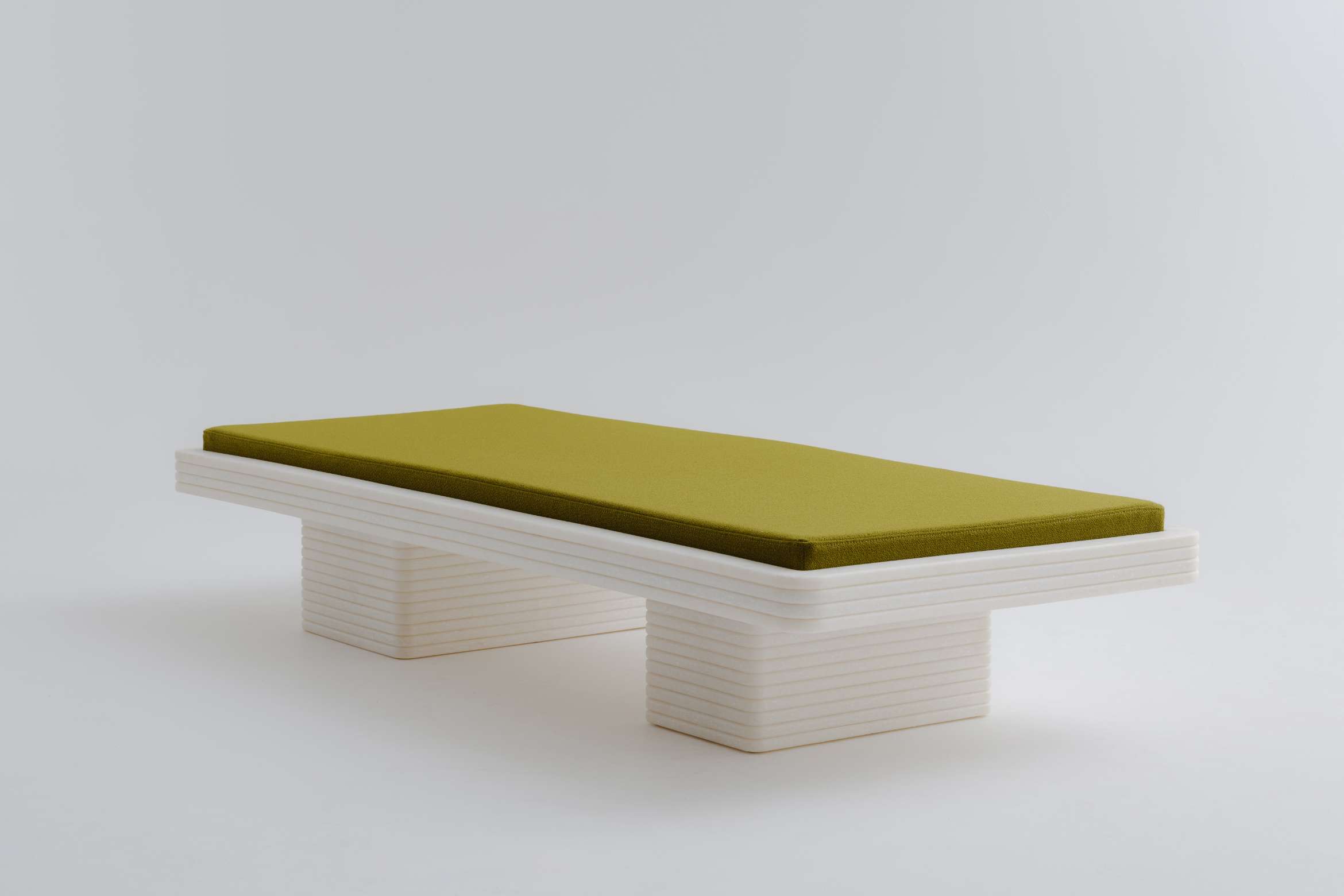Habitus Living: Tell us about your background and career so far in design. When and why did you set Fisch Designs up?
Ash Fischer: Fisch Designs was founded by me back in 2020 with my first design, the Lucha Lamp, after graduating at RMIT in 2019. As the world in 2020 was put on pause the Lamp was being kick-started by public figure, Flex Mami, resulting in global interest and one of my designs later being acquired by the NGV mid-2022, which was surreal. Modern Times played a huge part in that acquisition. It was crazy though – two years out of uni and I’m corresponding with the NGV!
I have slowly built a portfolio ranging from ashtrays made from recycled vapes to translucent mirrors all having a unique yet familiar style. Since meeting Orlando Hayes, an environmental scientist, Fisch Designs has turned to focus solely on environmentally conscious design. The Camada Daybed being the first furniture piece of a recycled plastic design series, the Camada Range.
Is your focus on material reuse and experimentation? If so, why?
The short answer is yes. I think undertaking the focus of environmentally conscious design means you try to implement a reuse of material or focus on an eco-friendly material with environmentally sound manufacturing methods. Orlando has really stepped up my game in thinking about what is possible. An example of this is a very loose concept we had with the upholsterer attaching the fabric to the plastic sheet without using staples and actually using an anchoring system within the plastic sheet allowing the user to wash the fabric.
It’s an interesting period for design because the word ‘sustainability’ is thrown around so much to a point of losing its truth to some degree. I think it needs to be more than just materials; how things are manufactured? How far do they travel? Why have you chosen that particular material? [These] are all things you should consider as a designer.
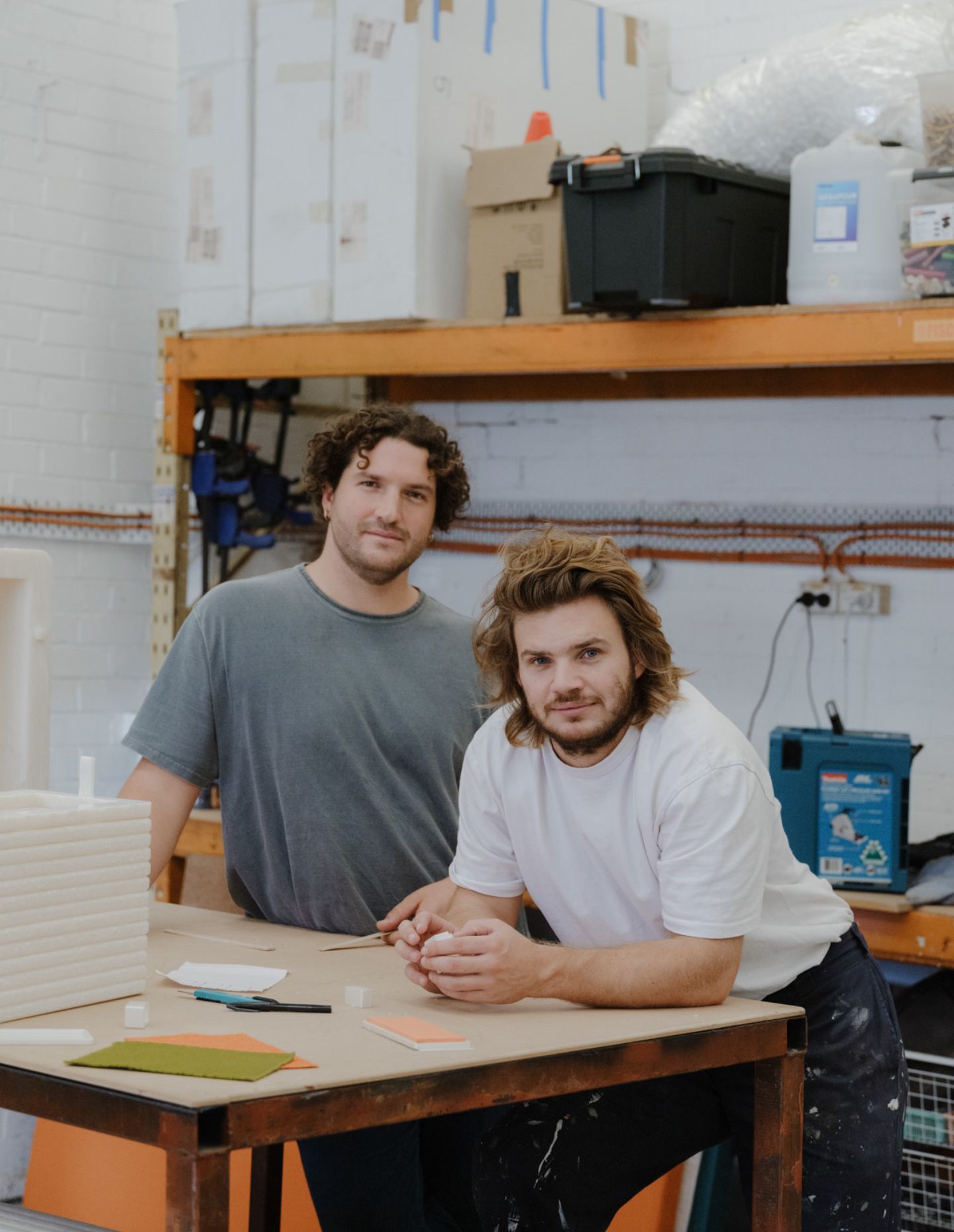
Tell us about the Camada Daybed.
Not to sound overzealous but after reflecting on the Camada Daybed after the ICFF, we really appreciated the intricacy, simplicity and beauty of the design. I think this was brought on by saying the same spiel for eight hours a day, three days in a row. Apart from the material being 100 per cent recycled HDPE – material that we can send via CNC file to any country which has a plastic recycling manufacturer to further reduce emissions – this daybed uses no adhesives or fixings and just rests within itself, which is pretty incredible. What I mean by this is that the layering system uses pins from the same material cut from the same sheets that are layered together and the weight of the base simply rests on top of the legs, so it really just consists of four different rectangles held together by friction and weight.
How important was the Carl Nielsen program at Powerhouse?
I think it’s pretty incredible that Powerhouse has started such a proactive program funded by iconic industrial designer, Carl Nielsen. One thing we found is that it’s an extremely tough industry to succeed in; even getting your foot in the door is not enough. Persistence is key. You could design the slickest piece of furniture in the world but if no one knows who you are, good luck getting in front of the right eyes. So we have really learnt a great deal on how it goes so much further than just design. It’s how you network, it’s who you know and also timing and luck always come into play. We found out about this program two weeks before submissions closed.
What’s in store for the future?
The future… ha, a lot! Orlando and I have dozens of seedling ideas. The near future definitely includes the Camada series such as a stool and a table of sorts which follows that layering system. We are hoping to also continually work with exciting materials, eco epoxy, seaweed pellets, rammed earth. Hopefully collaborate with larger companies on new products. Like most designers your brain is never off the clock. I couldn’t help thinking of a completely new daybed design the other day. But who knows – the future is no one’s business.
